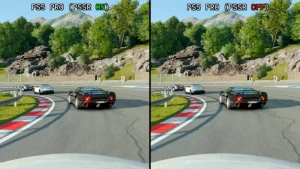الدورات
title
PlayStation 5 Pro vs PlayStation 5: A Detailed Comparison of Specs

The much-anticipated PlayStation 5 Pro was finally unveiled at the PlayStation 5 Technical Presentation, and much like its predecessor, the PS4 Pro, this mid-generation refresh is designed to push graphical fidelity to new heights. But how does the PS5 Pro compare to the original PS5? Let’s dive into the specifications and differences.
PS5 Pro vs PS5 – GPU
The PS5 Pro’s standout feature is its GPU upgrade. The PS5, launched in 2020, featured an AMD Zen 2 processor and RDNA 2 GPU, which offered performance on par with high-end gaming PCs at the time. However, the PS5 Pro builds on this with a significantly enhanced GPU.
- PS5 GPU: 36 Compute Units (CU) and 2,304 streaming multiprocessors (SM).
- PS5 Pro GPU: A 67% increase in compute units, bringing the total to 60 CUs and about 3,840 SMs, comparable to the AMD Radeon RX 6800.
The PS5 Pro also includes next-generation ray tracing hardware from AMD, which improves visual effects, allowing the console to handle more demanding ray tracing technology, a feature where AMD previously lagged behind NVIDIA.
PS5 Pro vs PS5 – Storage and Memory
Both the PS5 and PS5 Pro are equipped with high-speed PCIe 4.0 SSDs, ensuring quick loading times. However, the PS5 Pro sees a memory boost:
- PS5: 16GB of GDDR6 memory.
- PS5 Pro: Same 16GB of GDDR6, but 28% faster memory speeds, resulting in 560GB/s memory bandwidth compared to the PS5's 440GB/s.
This increase in memory bandwidth, combined with the upgraded GPU, will help the PS5 Pro deliver around a 45% performance increase, especially in 4K gaming.
PS5 Pro vs PS5 – Upscaling Technology
When the PS5 launched, it utilized checkerboard upscaling for 4K gameplay. With the PS5 Pro, Sony shifts to AI-based upscaling technology called PlayStation Spatial Super Resolution (PSSR), which uses AI algorithms to accurately fill in missing pixel information without sacrificing image quality.
This technology is designed to improve performance and visual fidelity, offering a more refined experience compared to the original PS5.
PS5 Pro vs PS5 – CPU
The CPU remains unchanged from the PS5, with both consoles featuring an 8-core Zen 2 processor. For higher resolutions like 4K, the focus shifts primarily to the GPU, meaning the CPU continues to serve its role in coordinating background processes and handling physics calculations without requiring a significant upgrade.
Is the PS5 Pro Really That Much of an Upgrade?
In terms of graphical performance, the PS5 Pro offers a substantial upgrade, especially for 4K gaming. The increased GPU power, along with new ray tracing and AI upscaling technology, will deliver a richer, more detailed gaming experience.
However, it’s important to note that the PS5 Pro uses AMD RDNA 2 architecture, which is nearly five years old. While the PS5 Pro is expected to outperform the base PS5, it's not a generational leap. It’s more of an iterative upgrade using refined hardware to provide better performance at higher resolutions.
The PS5 Pro is priced at $699, compared to the PS5's original price of $499. For gamers looking for a premium 4K gaming experience, the PS5 Pro will certainly offer more vivid graphics, but it may not justify the higher price tag for everyone.
Conclusion: PS5 Pro vs PS5
The PlayStation 5 Pro is a significant step up from the PS5, particularly in terms of GPU performance, ray tracing capabilities, and AI-based upscaling. It’s a great choice for gamers looking for enhanced 4K gaming performance, but those who are satisfied with the PS5 may not see the need to upgrade just yet. The PS5 Pro represents a refined and powerful version of the PS5, though it doesn't mark a major generational leap in terms of hardware.





